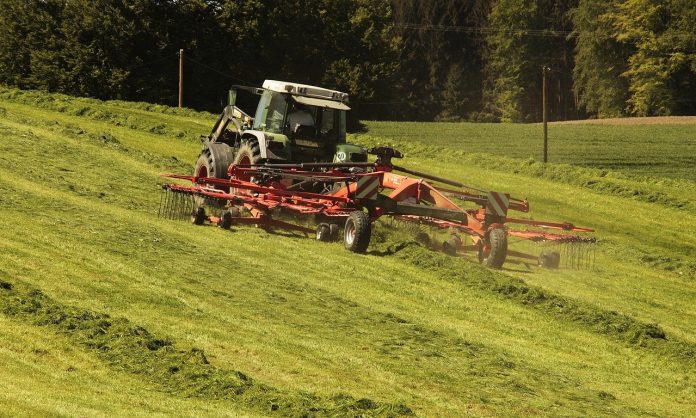I was very fortunate to get up most of my first cutting hay in May, the second cutting around the first of July and I have plenty of hay now, even extra in the event of unforeseen events. Many years I do not.
However, this is great time to assess what your winter forage needs will be and make plans based on your requirements and availability of the potential forage acres you farm.
For example, the two cheapest ways to extend a grazing season is grazing corn stalks and stockpiling cool season grass to graze later in the fall and winter.
Since I have plenty of hay now, I have put several of the hay fields in the pasture rotation, but with the ideal growing conditions the past several weeks, the fields are getting ahead of the cattle, so I will skip some and let them grow or stockpile for grazing later this fall.
Stockpiling
If you do stockpile for later grazing, you may want to decide if you want to add nitrogen to improve growth. After many years of research on this topic, the only consistent thing I can say is that adding nitrogen increases yields. I usually recommend around 50 pounds/acre or ~100 pounds of urea per acre.
The question is will that added nitrogen pay for the extra forage? My answer is, “it depends.” It depends on the cost of the fertilizer, the value you put on hay, and the utilization of the stockpiled grass.
For me, it often comes down to how short I am on hay and the extra effort to fertilize, and likewise, feed extra hay.
In many cases, the cost vs. the benefit of adding nitrogen to stockpile is close.
This is often a logical time to start stockpiling. It can be done as soon as the middle of July, and I have seen growth responses starting as late as mid-October in Southern Ohio. A rule of thumb is the earlier you start stockpiling, the greater the yields but lower the quality.
On the other hand, the later you start, the lower the yields but the greater the quality. Another twist some of my colleagues in Virginia have done is to graze some of the earlier stockpiled fescue in October, which stimulates a little more late season growth, then graze again later in the fall or winter.
Planting and purchasing
Two other options include planting something or purchasing feed. The most common things to plant for fall and winter grazing are brassicas (turnips), oats and cereal rye. You can plant these individually or together, and they provide high quality, high yielding feed.
It is not uncommon for a field of turnips to produce five tons of dry matter in 90 days. Turnips need to be planted very soon; the window is a little longer for oats and cereal rye.
One word of caution: If you have deer pressure, small grains and turnips are a favorite for deer. You may want to avoid this or even use it to your advantage.
Finally, purchasing feed this winter can be an option. I have fed limited amounts of corn out in the fields during the winter with excellent utilization, and purchasing hay is an option.
In either case, there is a risk of introducing new weeds on you farm. I now have cocklebur to deal with where I once fed purchased feed.
In the case of hay, whether you are buying it or selling it, don’t discount the fertilizer value in the hay. The nutrient removal of hay per ton is 45 pounds of nitrogen, 15 pounds of phosphorus, and 60 pounds of potassium.
Over the years, I have learned that the earlier you address potential issues, the more and better options you will have. We still have many options to assure adequate and economical feed for our grazing livestock this winter, but if you wait, many will be gone.













